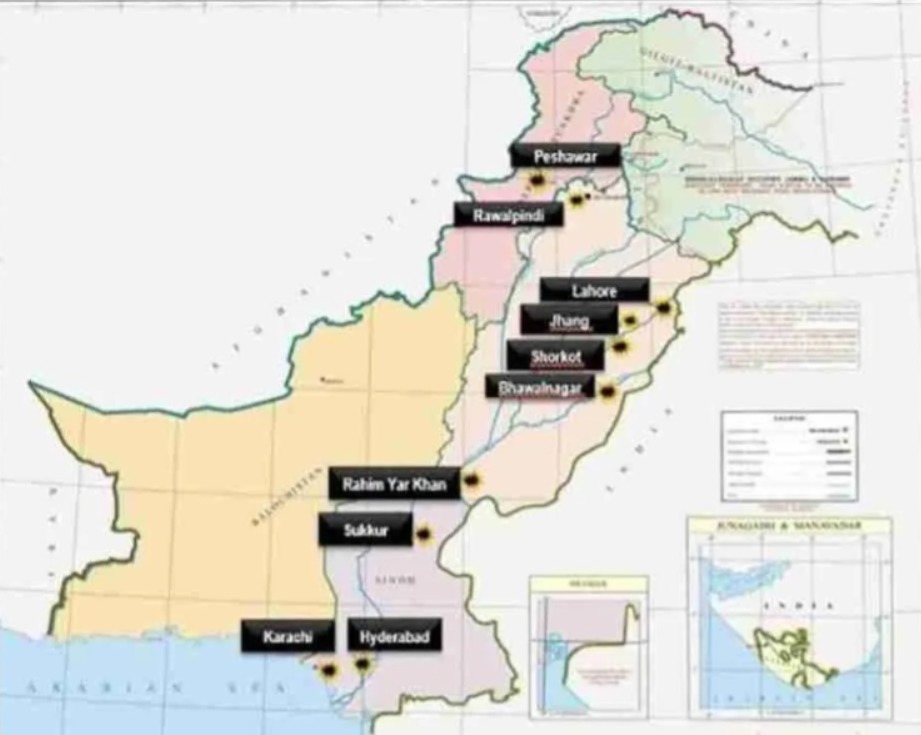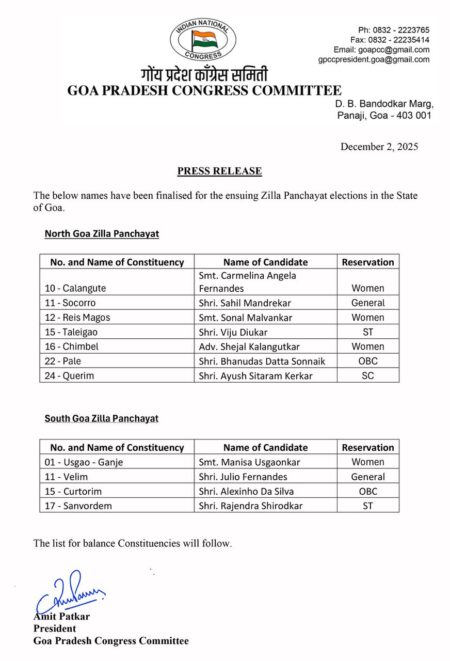New Delhi: Pakistan has officially acknowledged that India’s precision strikes under ‘Operation Sindoor’ caused far more damage than initially disclosed. A confidential Pakistani military dossier related to its internal campaign, ‘Operation Bunyan un Marsoos’, has revealed that at least eight more strategic locations were hit by Indian strikes on the intervening night of May 9 and 10—a separate wave from the previously reported May 6–7 offensive.
According to the dossier, Indian forces struck infrastructure in Peshawar, Jhang, Hyderabad (Sindh), Gujrat, Gujranwala, Bahawalnagar, Attock, and Chor, inflicting damage on both military and terror-related assets. These eight sites were not listed in official Indian Armed Forces briefings after the May 7 retaliatory operation, suggesting a broader scope of the mission than publicly acknowledged.
In addition, another map from the same dossier indicates fresh locations targeted by Indian forces between May 7 and 8, underlining the sustained nature of the operation.
India launched Operation Sindoor in response to the April 22 Pahalgam terror attack, which resulted in the death of 26 tourists. The massacre, later claimed by The Resistance Front (TRF)—a Lashkar-e-Taiba offshoot—involved terrorists questioning victims about their faith and demanding they recite a Kalma before executing them if they were found to be non-Muslims.
The Indian offensive, which aimed to dismantle terror infrastructure in Pakistan and Pakistan-Occupied Kashmir (PoK), reportedly killed over 100 terrorists. Days after the strikes, satellite imagery from Maxar Technologies revealed significant destruction at four major Pakistani air bases: Nur Khan Air Base (Rawalpindi), PAF Base Mushaf (Sargodha), Bholari Air Base, and PAF Base Shahbaz (Jacobabad).
Additional satellite visuals exposed the obliteration of terror camps in Bahawalpur and Muridke. Notably, before-and-after imagery of the Jamia Masjid Subhan Allah in Bahawalpur, the operational base of Jaish-e-Mohammed (JeM), highlighted substantial damage to the compound.
Following the intense Indian assault, Pakistan reportedly called for a ceasefire on May 10, just three days after the initial Indian strikes. While official ceasefire terms remain undisclosed, the developments mark a significant escalation in India’s posture toward cross-border terrorism.
Operation Sindoor is now being seen as one of India’s most extensive cross-border counter-terror operations in recent years, with implications for both regional stability and counter-terror policy.
Sorry, there was a YouTube error.








